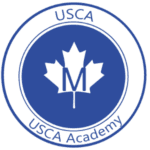| Course Type: | University Preparation |
| Credit Value: | 1.0 |
| Prerequisite: | Any university, university/college, or college preparation course in Social Sciences and Humanities, English, or Canadian and World Studies |
Course Description
HFA4U – Nutrition and Health is a Grade 12 course that examines the vital links between food, energy balance, and nutrition. Students will explore the dietary requirements of people at various life stages. They will also look into how good nutrition affects health and helps prevent diseases.
The hfa4u course discusses current trends in nutrition and health. It highlights the importance of making choices that promote food security and care for the environment. Through interactive learning, students will increase their understanding of healthy eating. They will also improve their cooking skills and build essential research abilities to tackle nutrition and health issues.
If you are interested in promoting well-being or want to make informed choices about food and sustainability, HFA4U – Nutrition and Health provides useful knowledge. Reach out to us for more details!
Outline of Course Content
Unit
Titles and Descriptions
Time and Sequence
Unit 1
Nutrition and Health
Students will learn about the roles nutrients play in overall body health. The process of digestion, absorption and metabolism of food will be explored as well as various digestive disorders. Students will also learn how to operate safely and efficiently in the kitchen.
22 hours
Unit 2
Eating Healthy and Lifespan Nutrition
In this unit, students will learn how to use Eating Well with Canada’s Food Guide and other reliable sources to support healthy eating and meeting dietary needs. Students will test and modify recipes to improve nutritional value and explore the concept of energy balance in order to understand how to improve their own and others’ nutritional status. Students will see how nutritional needs change throughout a person’s lifespan, and learn about the relationship between nutrition, health, and disease. Students will also investigate some current and emerging trends in food and nutrition
30 hours
Unit 3
Exploring Agriculture and Food Production
Students will learn about the interconnected stages of the agricultural and food system including production, processing, transport, packaging, warehousing, selling, and consuming, as well as examining inputs to the food system and outputs of the food system. Students will investigate a variety of alternative tools and techniques, such as initiatives that address environmental, economic, and social sustainability and the increased production required to feed the worlds expanding population.
25 hours
Unit 4
The Right to Food
Students will learn about social, cultural, and political factors that affect access to nutritious food and contribute to food security. Students will examine some of the effects of food insecurity and chronic hunger and consider how food insecurity and hunger can be reduced or eliminated for people in Canada and around the world.
20 hours
Unit 5
Course Culminating Activity – Nutrition Related Issues is the course culminating activity, or final summative evaluation, consisting of three parts: an independent unit of study, a food demonstration, and a final examination.
10 hours
Total
110 hours
When students are engaged in active and experiential learning, they tend to retain knowledge for longer periods and to develop, acquire, and integrate key skills more completely. Some of the teaching and learning strategies that are suitable to material taught in computer studies include:
Food Labs | Guided internet research | Direct Instructions |
Presentations | Discussion Groups | Movies and videos |
Interactive activities | Research projects | Model making |
Visuals | Multimedia presentations | Reflections |
Problem solving | Discussion groups | Interviews |
Assessment is a systematic process of collecting information or evidence about a student’s progress towards meeting the learning expectations. Assessment is embedded in the instructional activities throughout a unit. The expectations for the assessment tasks are clearly articulated and the learning activity is planned to make that demonstration possible. This process of beginning with the end in mind helps to keep focus on the expectations of the course. The purpose of assessment is to gather the data or evidence and to provide meaningful feedback to the student about how to improve or sustain the performance in the course. Scaled criteria designed as rubrics are often used to help the student to recognize their level of achievement and to provide guidance on how to achieve the next level.
Although assessment information can be gathered from a number of sources (the student himself, the student’s course mates, the teacher), evaluation is the responsibility of only the teacher. For evaluation is the process of making a judgment about the assessment information and determining the percentage grade or level.
The assessment will be based on the following processes that take place in the classroom:
| Assessment FOR Learning | Assessment AS Learning | Assessment OF Learning |
|---|---|---|
During this process the teacher seeks information from the students in order to decide where the learners are and where they need to go. | During this process the teacher fosters the capacity of the students and establishes individual goals for success with each one of them. | During this process the teacher reports student’s results in accordance to established criteria to inform how well students are learning. |
| Conversation | Conversation | Conversation |
Classroom discussion Self-evaluation Peer assessment | Classroom discussion Small group discussion Post-lab conferences | Presentations of research Debates |
| Observation | Observation | Observation |
| Drama workshops (taking direction) Steps in problem solving | Group discussions | Presentations Group Presentations |
| Student Products | Student Products | Student Products |
| Reflection journals (to be kept throughout the duration of the course) Check Lists Success Criteria | Practice sheets Socrative quizzes | Projects Poster presentations Tests In Class Presentations |
Assessment is embedded within the instructional process throughout each unit rather than being an isolated event at the end. Often, the learning and assessment tasks are the same, with formative assessment provided throughout the unit. In every case, the desired demonstration of learning is articulated clearly and the learning activity is planned to make that demonstration possible. This process of beginning with the end in mind helps to keep focus on the expectations of the course as stated in the course guideline. The evaluations are expressed as a percentage based upon the levels of achievement.
A variety of strategies are used to allow students opportunities to attain the necessary skills for success in this course and at the post-secondary level of study. To facilitate learning, the teacher uses a variety of activities engaging the whole class, small groups, and individual students.
Some of the approaches to teaching/learning include
Strategy | Purpose | Who | Assessment Tool |
Class discussion | Formative | Teacher/student | Observation Checklist |
Class Debates | Formative | Teacher | Rubric or marking scheme |
Daily class work | Formative | Teacher/student | Observation Checklist |
Assignments | Summative | Teacher | Rubric or marking scheme |
Written test | Summative | Student | Marking scheme |
Project | Formative | Teacher/student | Marking scheme |
Final written exam | Summative | Teacher/student | Marking scheme |
The evaluation of this course is based on the four Ministry of Education achievement categories of knowledge and understanding (25%), thinking (25%), communication (25%), and application (25%). The evaluation for this course is based on the student’s achievement of curriculum expectations and the demonstrated skills required for effective learning.
The percentage grade represents the quality of the student’s overall achievement of the expectations for the course and reflects the corresponding level of achievement as described in the achievement chart for the discipline.
A credit is granted and recorded for this course if the student’s grade is 50% or higher. The final grade for this course will be determined as follows:
- 70% of the grade will be based upon evaluations conducted throughout the course. This portion of the grade will reflect the student’s most consistent level of achievement throughout the course, although special consideration will be given to more recent evidence of achievement.
- 30% of the grade will be based on a final evaluation of two products administered at the end of the course. The first product is a Project, subdivided into three distinct subsections and is worth 15% of the overall course marks. This Project will be evaluated using a marking scheme and a rubric. The second product will be a final exam of well-formulated multiple choice questions requiring information from the whole course as well as the student’s reports completed through-out the course
Potential Resources
Teachers will bring additional resources and teaching materials that provide a rich and diverse learning environment.
Textbook
Aquino, P. and Warecki, P. (2013) Food Preparation: Foundations and Techniques.
Toronto: McGraw-Hill Ryerson
For the teachers who are planning a program in Social Science Education take into account several important areas. The areas of concern to all teachers that are outlined in the policy document of Ontario Ministry of Education, include the following:
- teaching approaches
- types of secondary school courses
- education for exceptional students
- the role of technology in the curriculum
- English as a second language (ESL) and English literacy development (ELD)
- career education
- cooperative education and other workplace experiences
- health and safety in mathematics


